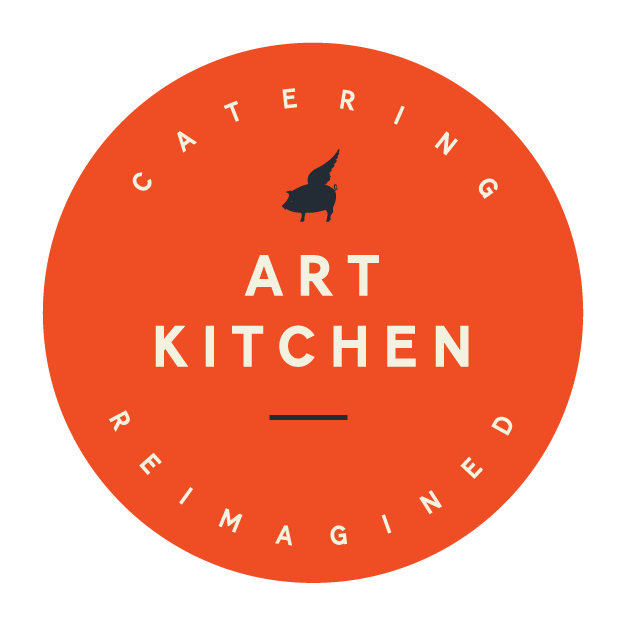
Healthy and Delicious: Balancing Nutrition in Home-Catered Menus
Are you trying to eat healthier and prioritise nutrition? The importance of nutrition to lead a fulfilling life cannot be understated. However, how can you ensure that your diet is all-natural and healthy? The best way to ensure a healthier diet is when you start with yourself. It would help if you make healthier choices no matter what. This includes any event you organise as well.
In this blog, we will examine different ways you can alter your home catering menu to include healthier choices that will leave your guests feeling rejuvenated. Let’s get the party started!
Understanding Nutrition in Home Catering
Nutrition in-home catering refers to the act of designing your catering menu while prioritising high-nutrient food. This includes using the healthy food pyramid to its full extent.
Nutrient-rich catering menus are a huge hit for children’s parties, care home events, weddings, corporate events, and even baby showers. Everyone finds the idea of nutrition-focused menus in catering extremely thoughtful, and it leaves your guests feeling amazed at how delicious food can also be nutritious.
Importance of Nutrition in Home Catering
People need to eat food for nutrition. Nutrition drives your body to function and enables you to work properly. A balanced diet is an important part of nutrition, which is why it is such an important goal for many people today. Without it, your body will fall victim to diseases, fatigue, and infections.
People who do not have a balanced diet face developmental issues, obesity, diabetes, high blood pressure, and diseases. This highlights the importance of nutrition in-home catering for events. A balanced diet in catering should include nutrients like minerals, vitamins, carbs, proteins, healthy fats, omega-3 fatty acids, and antioxidants.

The foods that you need to avoid include refined grains, processed foods, alcohol, trans fats, sugars, and salts. On the other hand, the main heroes of a healthy and nutritious diet include the following food groups:
- Fruits
- Meats
- Eggs
- Beans
- Dairy
- Nuts
- Vegetables
- Legumes
- Whole grains
Tips for Balancing Nutrition in Your Home Catering Menu
A nutrition-focused menu in-home catering includes all the abovementioned nutrients, but that doesn’t mean you can include one of each and get on with your day. You need to use each food group in a balanced way. Following are a few tips you can use for balancing nutrition:
Use The Colours And Textures Of Different Foods
Fruits and vegetables come in many different colours and textures, which is why people love fruit salads and vegetable stir-fries.
Even though each of these dishes tastes great, their appearance makes them enjoyable. You can use this to balance nutrition in your home catering menu and make your food appear more appetising.
Add An Extra Food Group To A Regular Dish
This advice is especially useful for picky eaters. This is because if someone is stuck on only eating specific food items, you can encourage them to try out new things for a more balanced diet by adding an extra food group into a dish they already enjoy.
This could mean anything from adding berries to oatmeal to eating a grilled cheese sandwich with tomato soup. Just ensure that the addition does not ruin the flavour profile of the original dish.

Make Variety Your Policy
The best way to maintain a balanced diet is to introduce various food groups in a single meal. This variety goes hand in hand with the tip for adding other food groups to a dish.
A good example of foods with various nutrients includes meat and vegetable bolognese. This is because it has three major food groups: vegetables, meats, and whole grains, which means when we look at the nutrient profile, it contains carbs, minerals, vitamins, antioxidants, and proteins.
Have Appropriate Portion Control Set In Place
A healthy diet is not all about eating a balanced diet but also about maintaining an eating balance. Do not let yourself get carried away. You need to have portion control for adults and children according to their needs. You cannot serve the same sized meal for everyone and expect them to be fulfilled. Good portion control promotes healthy eating and prevents overeating habits from developing.
Incorporate Healthy Fats
Trans fat may be very harmful, but it gives healthy fats a bad reputation. When you start incorporating healthy fats into your diet, you will see a significant shift in your overall health and wellness. Such healthy fats can be found in seeds, nuts, and olive oil. Olive oil is also a healthy alternative to regular cooking oil.

Top 10 Cooking Techniques That Help Retain Nutrients In Food
Many people are unaware that almost all the vitamin and mineral content is lost when you cook certain foods incorrectly.
A good example is lettuce, which reduces its Vitamin C content by more than 50% when boiled, while around 70% to 85% of omega-3 fatty acids in fish are reduced when it is fried.
Here are some alternative methods for cooking food that help retain nutrients and minerals:
Stewing
You may already be familiar with this type of cooking method, as stewing is used to make most soups and stews. Food is cut into small bite-size pieces and wholly immersed in a liquid, then simmered under a low flame. It creates a nutrient-rich soup of various food groups, including carbs, proteins, minerals, and vitamins.
Poaching
You may have heard about poaching. It is most commonly used to make breakfast, poached eggs in particular. In this method, food is cooked by submerging it in any liquid and heating it under a low flame. This keeps the delicate proteins in your food safe from destruction. Foods that can be cooked using this technique include chicken, eggs, and fish.
Sauteing
When you use a minimal amount of oil to cook food on a high-temperature flame, it is called sauteing. It keeps the mineral and vitamin content in vegetables from being reduced. Mushrooms, delicate cuts of meats, and most vegetables are significant for sauteing.
Grilling
This is one of the most beloved cooking styles, as grilling your food results in a unique flavour profile unlike any other. It involves using dry heat to cook meats and vegetables in a fast way. However, you need to be careful, as grilling is typically performed on open flames and can result in horrific accidents. The most commonly made dishes through grilling include steaks, hot dogs, bacon, and burgers.

Steaming
As the name suggests, steaming food is cooked using steam. A food steamer is used, which is great for maintaining delicate minerals and nutrients. The most commonly known dishes made by steaming include dumplings, rice, fish, and eggs.
Baking
This cooking method typically requires an oven, but it can also work in a big pot and an iron stand. It involves using dry heat for certain delicate foods like pies, cakes, cheeses, and breads.
Simmering
Simmering is a gentler cooking method than boiling. It involves using hot liquids to cook food. The ideal temperature for simmering is right below the boiling point, making it perfect for making soups and cooking meat.
Braising
In braising, the food is first cooked at high temperatures by sauteeing and then simmered in a covered pot under a low flame.
Roasting
Roast beef is a favourite choice for many people. It involves the use of high-temperature open flames to cook meats like whole turkey, chicken, and beef cuts. It protects the protein content present in the inner layers of the meat from degrading while cooking it from the outside.
Boiling
Lastly, the easiest method to cook food at high temperatures is boiling. This method is used to cook hard foods like rice, pasta, noodles, and vegetables. These hard foods have a high tolerance for heat damage and, therefore, can easily handle the heat without losing their nutrients.
You can give specific instructions to a home party catering service, like Art Kitchen, to prepare your food using any of these cooking techniques for balancing nutrition in your home catering menu.
Final Words
Home catering can be a great opportunity to provide healthy and nutritious meals for your guests. By incorporating a wide variety of food groups and using appropriate portion control, you can create a balanced menu that satisfies everyone’s dietary needs.
By using cooking techniques that help retain nutrients in food, you can ensure that your catering menu is not only delicious but also packed with nutrients that your guests need for a fulfilling life. Keep in mind that nutrition should not be an afterthought when it comes to home catering. Instead, it should be a priority as it is vital for our health and wellness.
So, go ahead and start planning your next event with a focus on nutrition. You will see a clear difference first-hand!

